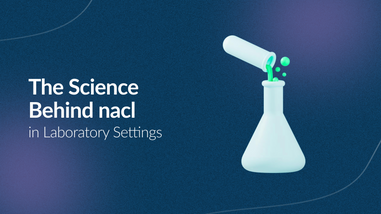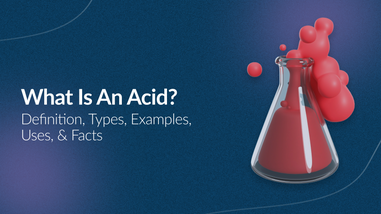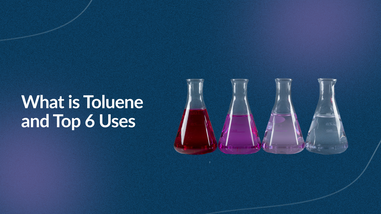- No products in the cart.
Methyl Ethyl Ketone (MEK) is one of the most versatile chemicals in modern industry. It is well known for its strong dissolving power and ability to mix with a wide range of substances. MEK plays an inseparable role in manufacturing, cleaning, and chemical processes.
As a maintenance crew member, production supervisor, or chemical engineer, understanding what MEK solvent is used for is essential. This knowledge will help you safely handle the product and conduct effective industrial operations.
Key Takeaways
-
What is MEK solvent? A versatile industrial chemical used in cleaning, coatings, and adhesives.
-
It is produced mainly by the dehydrogenation of 2-butanol or the oxidation of butane.
-
Top uses include industrial cleaning, plastics manufacturing, paints and dyes, resin curing, and plastic bonding.
-
Handling MEK requires proper safety measures, including PPE and good ventilation.
-
MEK can be recovered and reused, reducing environmental impact and costs.
-
Alternatives exist, but MEK remains preferred for its effectiveness and versatility.
What Is MEK Solvent (Methyl Ethyl Ketone)?
Methyl Ethyl Ketone (MEK), also known as 2-butanone or methyl acetone, is a clear, highly flammable liquid. It has a sharp, slightly sweet smell. Its chemical formula is C4H8O, and it has a molar mass of 72.11 g/mol. It easily bends with both water and alcohol. MEK is also used across many industries, making it a highly versatile and practical solvent for a wide range of industrial settings.

LabPro’s Methyl Ethyl Ketone (MEK) is ideal for laboratory processes, cleaning, and solvent applications, providing reliable performance, high purity, and safe handling for all your industrial and research needs.
MEK has some similarities with acetone in structure and odor, and is more widely used in industrial settings as it has a higher boiling point (79.64°C / 175.4°F) and a slower evaporation rate. Though MEK is a manufactured chemical that is used for industrial purposes, it can also be found in small amounts in nature, including fruits, vegetables, and some trees.
MEK solvent is also used in processes requiring high solvency, such as dissolving resins, adhesives, inks, and coatings. Its chemical reactivity and ability to mix with a wide range of substances make it an important solvent in industries like plastics, paints, dyes, and synthetic rubber production.
How Is MEK Solvent Produced?
We have already discussed what MEK solvent is. Now, let’s look into how it is produced. Methyl Ethyl Ketone solvent is mainly manufactured for industrial use. It has a high demand as a versatile solvent across the world, and its demand keeps increasing worldwide.
The most common method of producing MEK solvent is the dehydrogenation of 2-butanol. This is a process in which hydrogen atoms are removed from the 2-butanol molecule using catalysts (copper, zinc, or bronze). This reaction produces MEK and hydrogen gas as a by-product and accounts for the majority of MEK produced globally. This is the primary method of producing MEK solvent.
Another method for producing MEK is through the oxidation of butane; as a result of this oxidation, MEK is produced. While this process is not widely used around the world, it is still an essential source in the chemical industry. Additionally, there are other specialized methods, such as Wacker oxidation of isobutyl benzene or 2-butene.
Natural MEK can be found in certain fruits, vegetables, honey, and some trees such as junipers and cedars. Seaweed and specific bacteria also release MEK into the environment. Compared to industrial production, these natural sources are little in amount.
The combination of these production methods ensures a consistent supply of MEK solvent to industries such as paints and coatings, adhesives, plastics, textiles, and cleaning products.
MEK As a Solvent
Yet what is MEK solvent? As a solvent, methyl ethyl ketone is widely valued for its effectiveness across many industries. Its high boiling point and moderate evaporation rate make MEK ideal for dissolving a lot of substances. Along with this, it also has a longer-lasting effect compared to faster-evaporating solvents like acetone.
MEK is also a key ingredient in paints, coatings, adhesives, inks, and cleaning products. It ensures smooth application and proper adhesion in products like paints. Its solvent strength is also used for degreasing and cleaning metal surfaces, removing residues, or preparing surfaces before painting or bonding.
Top 5 Uses Of MEK
MEK solvent, combined with its chemical properties, plays an important role in cleaning, manufacturing, and bonding processes. Here are the top five ways methyl ethyl ketone is commonly used in industrial and commercial settings.
Industrial Cleaning: MEK solvent is a highly effective industrial cleaning agent due to its strong solvency and corrosive properties. It is widely used to remove grease, oils, adhesives, paints, and other coatings from surfaces.
In factories and laboratories, MEK helps prepare surfaces before painting, bonding, or refurbishing. It ensures that new coatings or parts adhere properly. It's particularly effective for tasks that require thorough cleaning without leaving residues.
Backbone of Petrochemical and Plastics Manufacturing: In the petrochemical and plastics industries, MEK is used as a hardener, solvent, and chemical intermediate. It plays a crucial role in producing resins, synthetic rubber, and other plastic materials. MEK's chemical properties dissolve and process polymers efficiently. This characteristic makes MEK solvent an essential part of the manufacturing of plastics, fibers, and other synthetic materials.
Key Ingredient in Paints, Dyes, and Glues: MEK is widely used as a solvent in paints, dyes, and adhesives. It is used to dissolve resins and pigments, so that the finish is smooth and the color is even. MEK solvent has a slow evaporation rate compared to acetone, allowing even drying in products such as varnishes, lacquers, paint removers, and dry-erase markers. MEK's strong solvency ensures that inks and adhesives flow correctly and bond effectively.
Essential Curing Agent for Resins and Fiberglass: MEK solvent is also used in the production of fiberglass and polyester resins. It serves as a catalyst that helps liquid resins solidify, providing strength and coherence to the finished product. For this process, MEK is indispensable in manufacturing durable and high-quality fiberglass components, which are used in automotive, marine, and construction applications.

Plastic Welding and Bonding: MEK solvent is also used as a chemical welding agent for plastics. It softens the surface of plastics and allows two pieces to mix as it evaporates. This makes MEK very useful for assembling plastic parts, producing plastic goods, and even bonding materials like textiles or paraffin wax. Its role as both a solvent and a bonding agent shows how versatile MEK is.
Safety, Handling, and Regulatory Guidelines
Though methyl ethyl ketone is widely used in our daily life products, it is also highly flammable and can irritate the eyes, skin, and respiratory system. Anyone working with chemicals should understand what MEK solvent is and how to handle it safely. MEK vapors may cause headaches, dizziness, or nausea when being exposed for a very long time. Moreover, direct contact can lead to skin and eye irritation. Having personal protective equipment (PPE) is a must.
NOTE: To reduce risk, always work in a well-ventilated environment or use local exhaust ventilation to prevent vapor concentration. Wear chemical-resistant gloves (such as nitrile), safety goggles or a face shield, and protective clothing that covers exposed skin. If there is potential for inhaling vapors, use an appropriate respirator rated for organic solvents.
Maintaining MEK is also very important. It is better to keep it tightly sealed in clearly labeled containers made of compatible materials such as stainless steel or certain plastics. Store MEK in a cool, dry, well-ventilated place, away from heat sources, sparks, and open flames. Keep it separate from oxidizing agents, which can cause dangerous reactions.
Good storage is just as important as careful handling. By following these precautions, industries can make the most of MEK's versatility while keeping workers safe.
Environmental Impact and MEK Recovery
Methyl ethyl ketone evaporates quickly, so it can easily enter the air as a volatile organic compound (VOC). In the atmosphere, MEK contributes to the formation of ground-level ozone, which plays a role in smog and can harm air quality. When released into soil or water, it usually breaks down within a few days, as it dissolves in water and is degraded by natural microbes.
The first thing that we need to reduce environmental impact is to know what MEK solvent is and its characteristics. This information makes it possible to reduce the impact and become more environmentally friendly. For this reason, many industries focus on MEK recovery. These recovery systems capture and reuse MEK, instead of letting it evaporate or sending it to waste.
Recovering and recycling MEK has multiple benefits. The most important benefit is that it reduces raw material costs, lowers hazardous waste disposal fees, and helps companies comply with air-quality regulations that limit VOC emissions.
With this, businesses not only protect the environment but also safeguard their bottom line and take advantage of MEK's valuable solvent properties.
Benefits of Using MEK
MEK is prized across many industries because it has a great balance of strength and versatility.
-
Powerful Solvent - Quickly dissolves a wide range of resins, oils, and performs more effectively than many alternatives.
-
Fast Evaporation - Dries quickly and speeds up manufacturing and maintenance processes.
-
Material Compatibility - Works well with plastics, synthetic rubber, metals, and glass.
-
Versatile Applications - Useful for cleaning, bonding, coating, and chemical production across multiple industries.
-
Recoverable and Reusable -MEK can often be distilled or condensed for reuse. This lowers costs and reduces waste.

Alternatives to MEK
When MEK is not the best option because of safety, environmental, or regulatory concerns, several other solvents can serve as effective substitutes. However, before substituting, we need to know what MEK solvent is and what characteristics it has, so that we can choose the best option. Here are other options that can substitute for MEK solvent.
Acetone is one of the most common alternatives. It evaporates quickly and works well for degreasing and surface preparation. However, it may not dissolve certain resins as effectively as MEK.
Toluene provides a slower evaporation rate that can be helpful for extended work times and is strong enough for coatings and adhesives. Yet, it requires careful handling due to its toxicity and flammability.
Xylene is another strong solvent with a moderate evaporation rate. It is often used for thinning paints and cleaning, though it has a stronger odor and higher health risks.
Isopropyl alcohol (IPA) is used for applications that need a gentler solvent. It is suitable for electronics cleaning and light degreasing, though it is less powerful than MEK.
Propylene glycol monomethyl ether (PGME) is a more eco-friendly option compared to others. It has lower toxicity and volatile organic compound (VOC) content. It is mainly used in coatings and inks where a slower evaporation rate is acceptable.
NOTE: Before switching to any of these alternatives, it is important to read the safety data.
Industry Insights And Market Trends
The global market for methyl ethyl ketone remains strong. It is driven by MEK's high demand and critical role in coatings, adhesives, inks, and resin production. The demand increase is closely tied to the rise in construction, automotive, and electronics manufacturing. These are the main sectors that use MEK as they rely on it for surface preparation, cleaning, and chemical processing.
Recently, there's been a bigger focus on sustainability in the MEK market. Many manufacturers now use closed-loop recovery systems that clean and reuse MEK.
This helps cut costs and lowers environmental impact. Despite these shifts, MEK remains a preferred solvent because of its effectiveness, cost-efficiency, and compatibility with a wide range of materials.
At Lab Pro Inc., we offer a vast selection of high-quality chemicals, solvents, and lab supplies to meet all your industrial and research needs.
Explore our Vendor Managed Inventory (VMI) services, designed to streamline your lab operations, reduce costs, and ensure you never run out of essential supplies.
Explore the products and services that keep your lab running smoothly.
FAQ
How is methyl ethyl ketone made?
Methyl ethyl ketone (MEK) is mostly made by removing hydrogen from a chemical called 2-butanol. This process is called dehydrogenation and creates MEK and hydrogen gas. A smaller amount of MEK also comes from the oxidation of butane.
How is methyl ethyl ketone used?
MEK is widely used in different industries. However, it is mainly used as a strong industrial solvent. It helps dissolve or thin products like paints, coatings, glues, and inks. MEK is also important in making plastics, synthetic rubber, and fiberglass, and it works as a cleaning agent to remove grease, oils, and adhesives from surfaces.
What is methyl ethyl ketone peroxide?
Methyl ethyl ketone peroxide (MEKP) is a liquid organic peroxide made from methyl ethyl ketone and hydrogen peroxide. It is a powerful catalyst often used to harden polyester resins and fiberglass. MEKP is very reactive and can be explosive if not handled correctly. Therefore, it must be stored in cool conditions and used with proper safety precautions, such as gloves, goggles, and good ventilation.
What does methyl ethyl ketone smell like?
It has a sharp, sweet odor that is similar to acetone or strong nail polish remover. Many people describe it as a strong, slightly fruity chemical smell.
How toxic is Methyl ethyl ketone?
MEK is considered moderately toxic. Breathing in its vapors or getting it on your skin can irritate your eyes, nose, throat, and lungs, and may cause headaches or dizziness. Swallowing MEK can upset the stomach and, in large amounts, affect the nervous system. Long-term exposure at high levels may lead to more serious health problems. Always handle MEK in a well-ventilated area and use protective gloves and goggles to reduce risk.













































Will MEK bring back the shine to piece of plastic that has been machined?
I see where MEK is used to think gel coat for spraying & also as a hardener/catalyst to cure the gel coat. This is confusing to me. Please explain as I want to spray gel coat that is thinned for a spray gun. Thank you